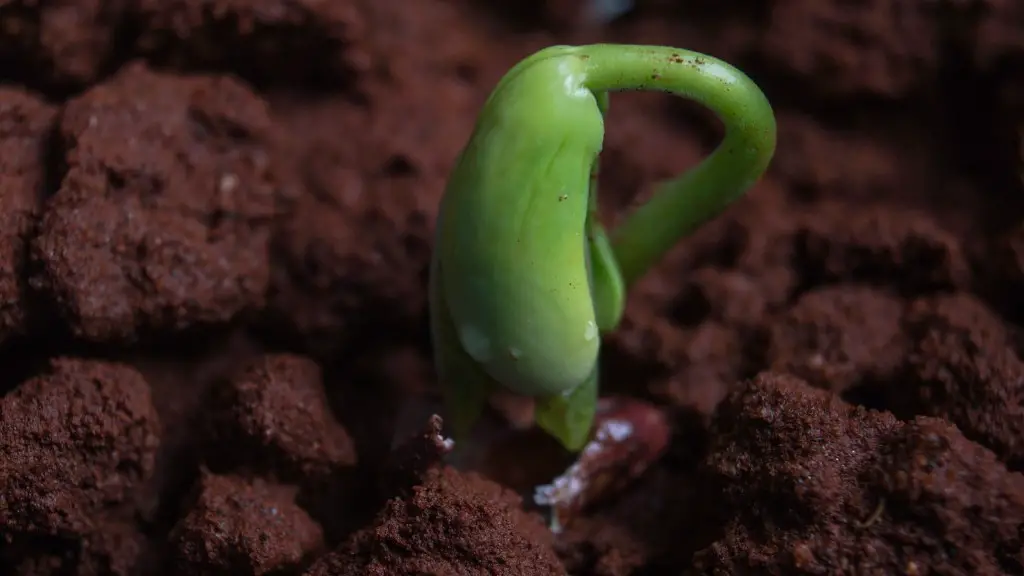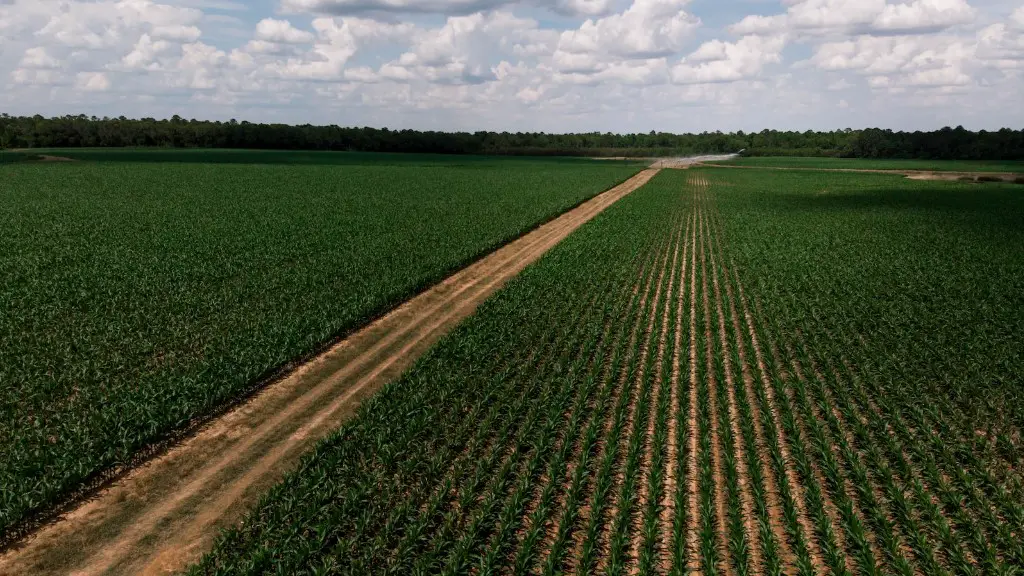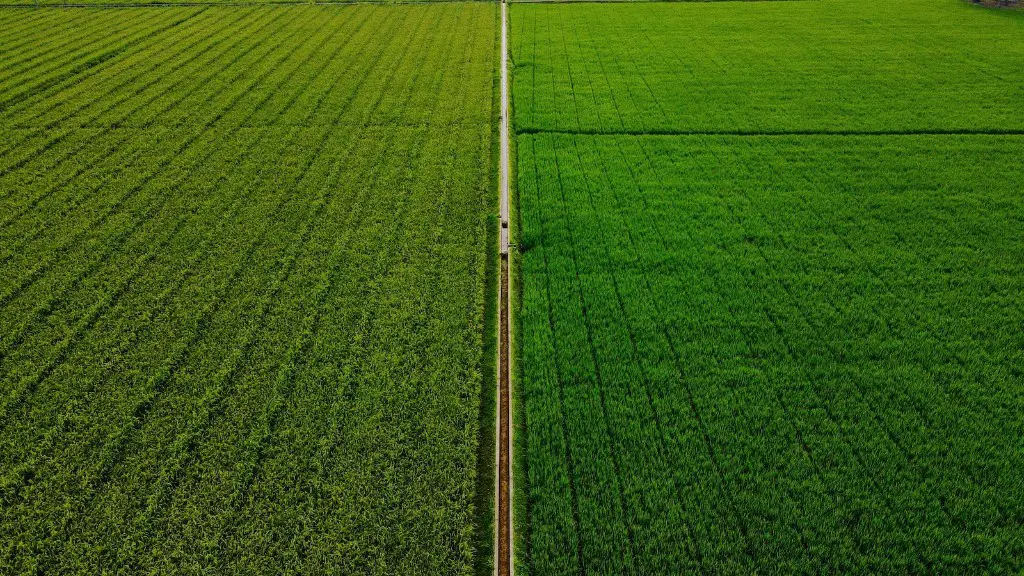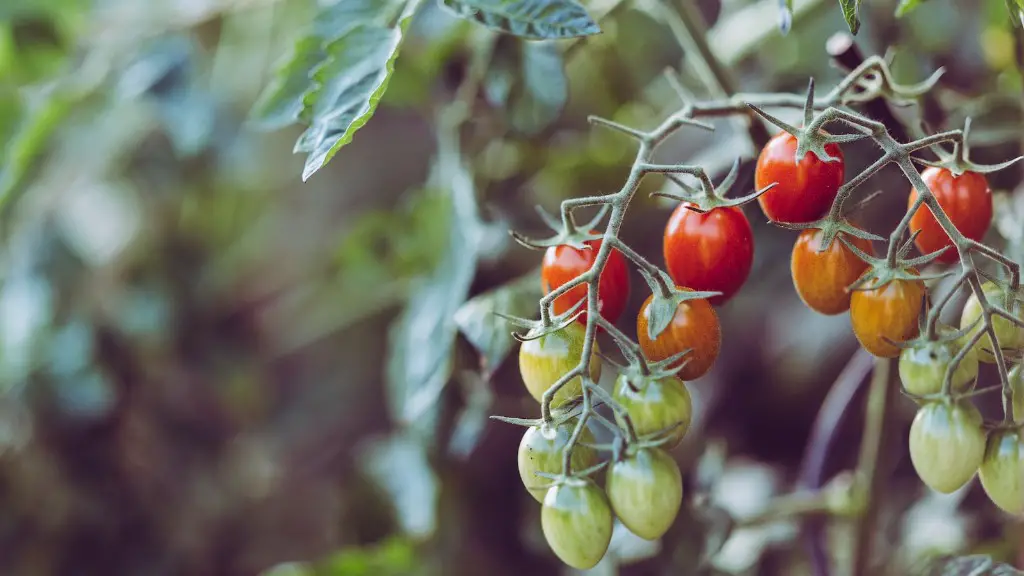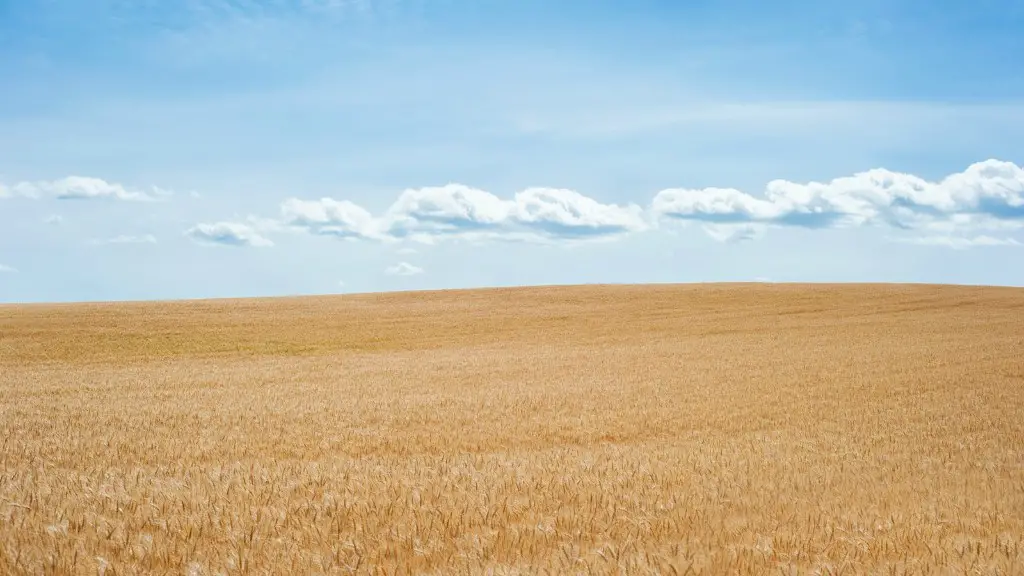Technology has revolutionized farming and transformed the way we produce food and how modern-day agriculture is carried out. It has changed the way foods are grown and processed, and has impacted the global food system in multiple positive ways. There are a number of innovative technologies being used in agriculture today including artificial intelligence, sensors, automation, robotics, and the Internet of Things. These technologies can help with logistics, production, marketing, and data collection and analysis.
Automation is one of the most important technological advancements in modern agriculture. Automation has improved agricultural productivity as machines are able to take on tasks that are too difficult or too time consuming for humans. Robotics also have enormous potential to increase efficiency in farming. For example, fruit and vegetable picking machines can be used to harvest crops in a fraction of the time it would take human laborers and can guarantee consistent quality. Automation can also be used to monitor animals, as well as environmental variables such as temperature and rainfall.
Using Internet of Things (IoT) and advanced sensors, precision agriculture takes farming to an entirely new level by bringing together data, analytics and connected devices to acquire real-time insights and make on-the-fly decisions. It allows farmers to collect more detailed information about crop conditions and the environment, so they can make the best decisions for optimal yields. For example, a combination of satellite imagery, soil sensors and drone-based analytics can help track soil health, crop health, and crop performance in real-time, therefore allowing farmers to make decisions about inputs, such as fertilizer and pest control, and optimize crop production.
AI-powered tools are also being used to assist in the decision-making process. AI based technologies can evaluate large amounts of data to identify trends, suggest improvements and even predict the outcome of certain decisions. For example, AI-based systems can identify patterns in weather patterns and help farmers take preventive action to save their crops if a certain weather event is predicted. AI powered bots can also be used to automate manual tasks, such as order management or crop planning.
Big Data and analytics can also be used to analyze large amounts of data and identify patterns, trends and correlations. This can inform farmers about the best irrigation, fertilization and pest control strategies. This data can also be used to understand customer preferences and come up with better marketing strategies. Additionally, data generated from connected IoT devices can be used to monitor the health of animals and detect diseases quickly.
In conclusion, technology has enabled the agriculture industry to take huge strides forward in terms of productivity and efficiency. From automation and robotics to Big Data and AI, technology has revolutionized farming and continues to make substantial improvements.
Artificial Intelligence
Artificial Intelligence (AI) is one of the most important technological advances in modern agriculture. AI can assess large amounts of data and detect trends in order to make better decisions with regards to crop growth and output. AI-based systems can identify patterns in weather patterns and help farmers take preventive action if a certain weather event is predicted. AI-driven bots can also be used to automate manual tasks related to order management or crop management. Furthermore, AI can be employed to gather data from multiple sensors, analyze and consolidate this data, and then generate actionable insights to support farmers in real-time.
Using AI, farmers can identify the most efficient approach for watering, fertilizing, and pest control, as well as optimize their production cycles. AI technology can also help identify areas of the farm that need improvement and suggest solutions. For example, some AI bots can be used to monitor the health of animals, so farmers can take action to prevent diseases before they occur. Additionally, AI-based decision support systems can help farmers develop better strategies for meeting customer demands.
AI-powered tools are also being used to analyze images in order to detect diseases, pests, and even weed growth. This will allow farmers to detect and prevent problems in their crops much faster and with greater accuracy. AI-based livestock monitoring systems can also track the health of animals, providing early warning signs of potential problems in order to intervene in time.
To sum up, AI is a powerful tool that can revolutionize agriculture and help farmers increase yields, improve efficiency and optimize production processes. AI-based systems can provide actionable insights in real-time and help farmers make better decisions for optimal yields.
IoT Solutions
The Internet of Things (IoT) is transforming agriculture in ways never before seen. By connecting devices, operations and people, IoT solutions are providing farmers with real-time insights and helping them to make on-the-fly decisions. IoT solutions allow farmers to collect more detailed information about their crop conditions, environment, and their customers.
For example, IoT-enabled devices can be used to collect environmental data such as temperature, humidity, wind speeds and soil moisture levels. This data can then be used to detect changes in climate conditions, providing advanced warning of potential droughts or floods. This information can enable farmers to adjust their plans in advance, making sure they are well prepared to handle any upcoming weather-related problems.
IoT solutions can also provide insights into customer demands, allowing farmers to cater their produce accordingly. Utilizing a combination of satellite images, soil sensors, and drone-based analytics, farmers can track the health of their crops and optimize their production process. Additionally, IoT solutions can be used to monitor the health of animals, helping farmers detect diseases at early stages and intervene in time.
To conclude, the Internet of Things provides a powerful platform for modern agriculture. By accessing real-time data and insights, farmers can make the best decisions for optimal yields and develop customer-oriented strategies. IoT solutions can help optimize production and make sure farmers have access to the most updated information, allowing them to make more informed decisions.
Robotics
Robotics is another key technology transforming agriculture. Robots can be used for tasks which are too difficult or too time consuming for human laborers. For instance, robotic fruit and vegetable picking machines can be used to pick crops in a fraction of the time a human labourer would take. The results provide greater accuracy and consistency compared to human pickers.
Robots are also being used to tend to animals and measure variables such as temperature and pH. Autonomous robots allow robots to roam around the farm to monitor livestock, detect diseases, and ensure the well being of animals. This allows farmers to react quickly if any problems arise, which in turn reduces the stress on animals and enhances animal safety.
Robotics can also be used to reduce soil compaction and improve soil quality. Autonomous tractor robots driven by GPS systems can reduce costs related to soil management and maintain soil health. Furthermore, robots can be used to harvest and process crops, as well as handle packaging and delivery.
In conclusion, robotic technology is offering new opportunities for the agricultural sector. By taking on time consuming, and sometimes dangerous, tasks, robots are helping farmers maximize yield, reduce waste and improve efficiency. The use of robots in farming operations will continue to increase, as more and more robots are being developed to take on tasks that are normally handled by humans.
Big Data & Analytics
Big Data and analytics are also being used to analyze large amounts of data in order to help farmers make better decisions. With the help of advanced analytics, farmers can identify correlations between different variables and obtain useful insights into their operations, crops, and livestock. By understanding the relationships between data points, farmers can develop better irrigation, fertilization, and pest control strategies. This data can also be used to understand customer preferences and come up with better marketing strategies.
Big data and analytics can also be used to monitor changes in crop yields and identify patterns and trends. For example, data gathered from sensor-equipped devices can help farmers examine the impact of adverse weather conditions and pests on crop yield. All this insight gathered from different sources enables farmers to make informed decisions. This helps farmers save money, optimize their inputs, and maximize yields.
In addition, predictive analytics can be used to anticipate market trends and customer behaviour. By using past data, farmers can create detailed forecasts and more accurately predict future demand. This allows them to plan their production cycles accordingly so that they are well prepared to meet customer needs.
To conclude, analytics provides a powerful platform for farmers to analyze and trace trends in their data. With the help of big data and analytics, farmers can make better decisions, optimize their inputs and maximize their yields. Predictive analytics can also help farmers forecast customer needs and plan accordingly.
